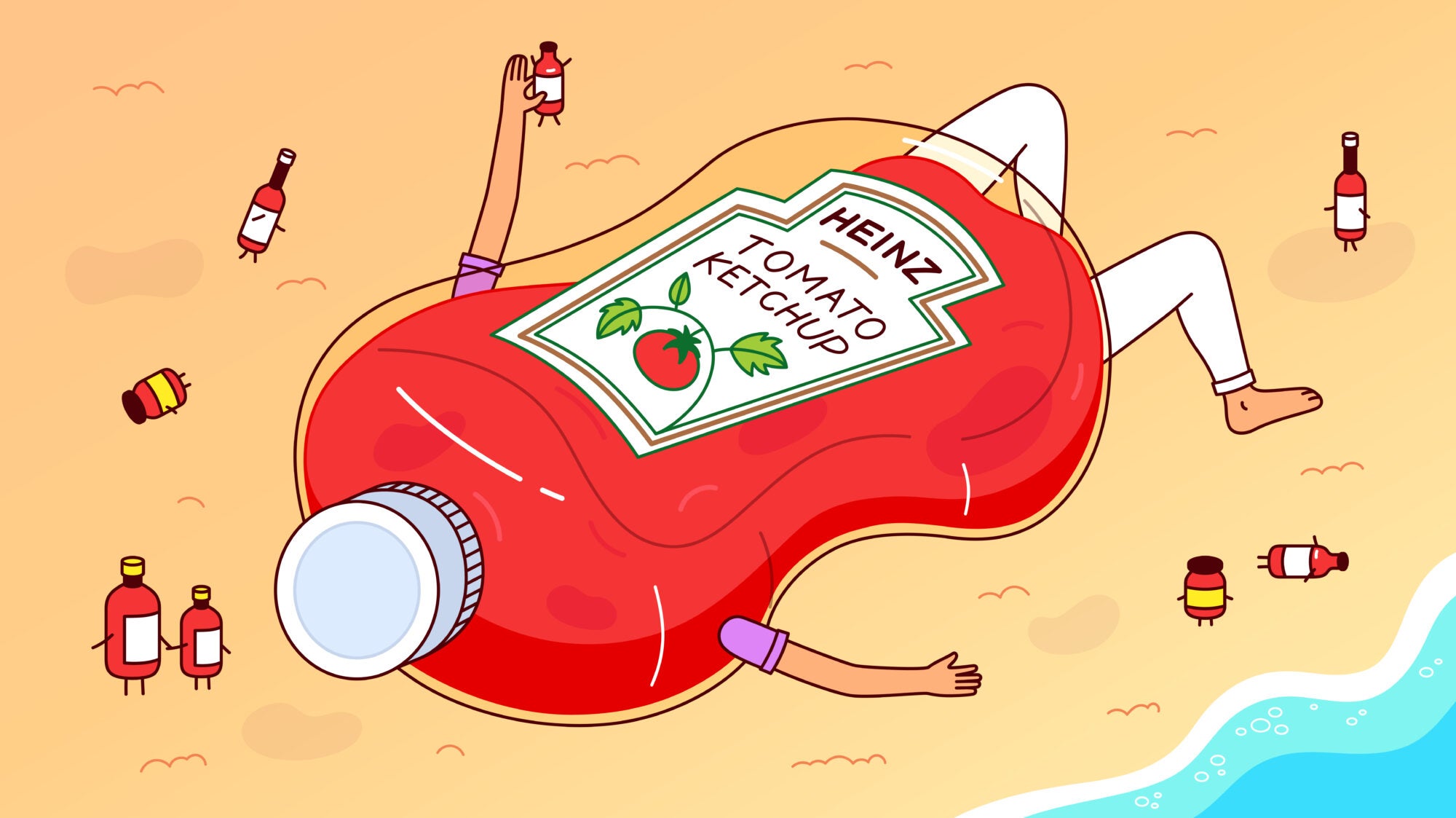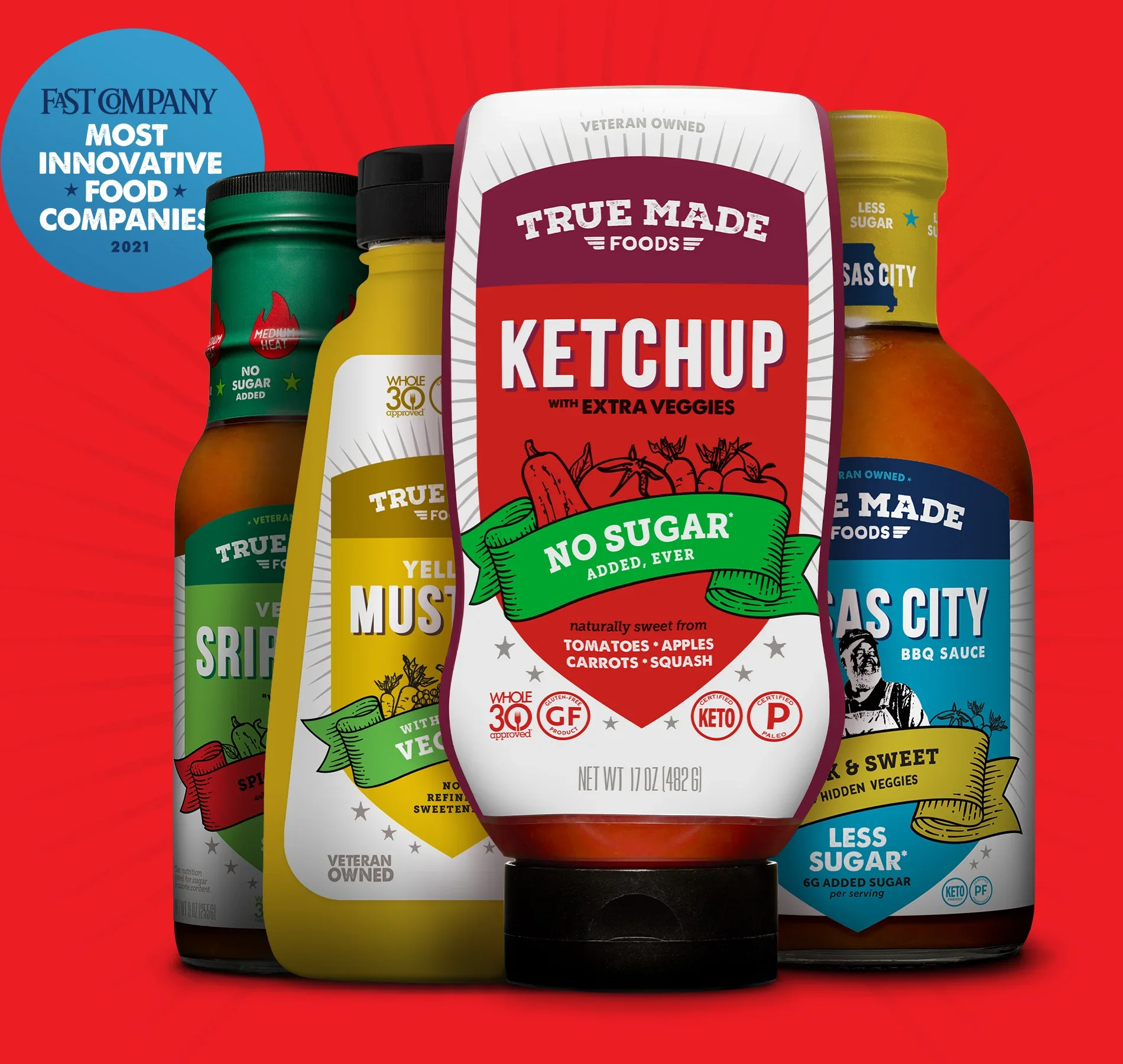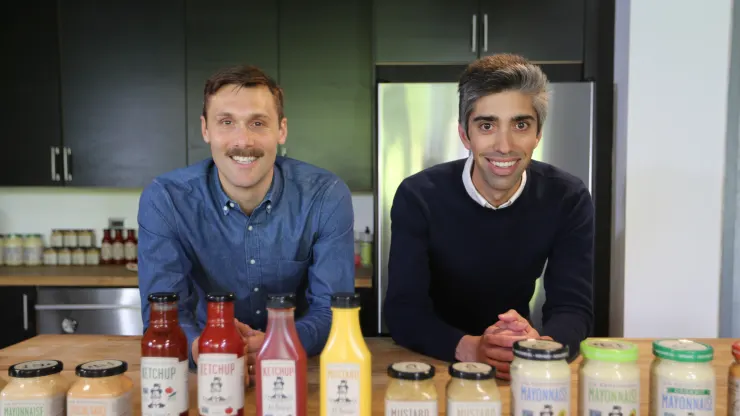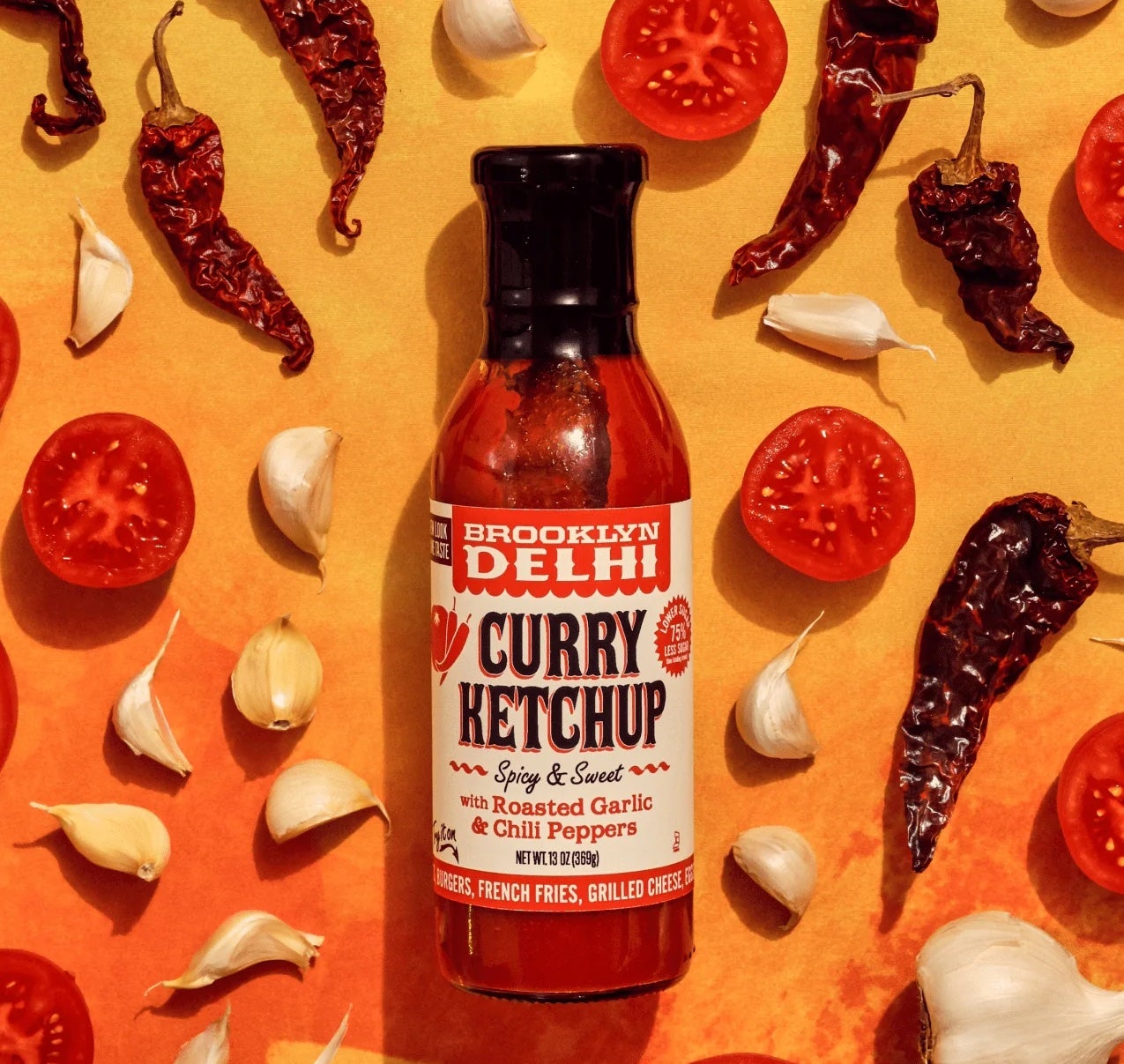
Can any startup compete with the massive scale and heavy nostalgia of a single legacy brand?
By the time the first recipe for tomato ketchup appeared in Philadelphia in 1812, the condiment had already existed around the world in countless variations—all made without tomatoes. Ancient Chinese texts describe a condiment made from fermented fish brine, pronounced “kê-chiap” in Hokkien. The name, yet perhaps not quite the same ingredients, traveled to Indonesia, where the term “kecap” still refers to fermented soybean-based sauces. It’s unclear what sauce exactly served as the inspiration for countless ketchups that were made by the British in the 18th century with everything from mushrooms to oysters to nuts and fruit, used to season anything from meats to soups to other sauces. Yet by the 20th century, the innovations had largely come to a crashing halt. Tomato ketchup became the ketchup to end all other ketchups.
Not only that, but if it wasn’t a crimson, miraculously sweet and savory topping with a certain viscosity that could squiggle along the length of a hot dog, a manufacturer likely wouldn’t dare to call its product ketchup. Around the world, variations on tomato-based ketchups do exist—like Germany and the Netherlands’ ubiquitous curry ketchup. But in the United States, one version of ketchup from one brand commands a staggering 60% market share. Its name has become nearly synonymous with ketchup itself, its image burnished as icon for the category. Its recipe has been lodged in our taste memories from toddlerhood.
As a result, when shopping for ketchup in a grocery aisle, we enter an almost zombie-like state, relinquishing our personal agency to what feels like unshakable social forces. We reach for the Heinz.
To Scott Norton, Mark Ramadan, Brandon Child, and Win Bennett in the spring of 2008, this seemed like an opportunity. It was their last semester of senior year at Brown University when the idea took hold to break up the monopoly—and monotony—that was Heinz Tomato Ketchup.
“We knew that Heinz was a trusted brand,” said Norton in a recent phone interview. “So instead of making [our ketchup] like Heinz but better, we decided to make it dramatically different—if Heinz was squirting, then we would be scooping; if Heinz was in plastic, then we were in glass; if Heinz was Americana, we were going to be British.”
Sir Kensington’s Ketchup launched with much media fanfare in 2010, in spicy and original flavors. Both SKUs sported a tall, glass bottle emblazoned with a fictional mascot of a monocled dandy reminiscent of Planters’s Mr. Peanut. The differences were even more pronounced once the product was scooped (not squirted) out: a deep, fudgy maroon, this ketchup was thicker, more opaque, and seasoned with a hint of allspice. Unlike Heinz ketchup, which is akin to gel toothpaste in its consistency, it wasn’t completely smooth. It tasted more concentrated, yet less sweet; a little went a longer way—whereas you wouldn’t think twice about smothering your French fries in Heinz. Sir Kensington’s flavor was more tomatoey, says Norton, thanks to using a combination of tomato paste and crushed tomatoes, rather than only tomato paste like Heinz’s.
This, among other reasons, made their product more expensive to produce than Heinz’s—the largest being the difference in scale of operations for a start-up compared to a giant food conglomerate that has been making its ketchup for over 150 years. Another difference was high-fructose corn syrup, the absence of which Sir Kensington’s conspicuously launched its ketchup around, knowing that this additive had earned the ire of foodies by the 2000s. But Sir Kensington’s early buzz and “disruptor” status would not last long.
Earlier this year, Sir Kensington’s, which was acquired by the conglomerate Unilever in 2017, announced it would discontinue production of its ketchup, while other products like mustard and mayonnaise would remain. Although the founders were no longer part of the brand, Norton says this was a major disappointment. They’d been vaguely warned about the possibility for several months, but they still found it hard to accept that the brand’s first and flagship product—its whole raison d’être—would be history.
“I’d say that the familiarity that the traditional ketchup formula has emblazoned on people’s memories is a very powerful one,” Norton reflects.
When Brooklyn Delhi, a brand of Indian pantry staples, added a curry ketchup to its product line in 2018, it seemed like a good business decision. Its flagship product was achaar, a South Indian condiment the brand had toiled to familiarize American consumers with for four years. Attaching its name to perhaps the two most recognizable American condiments—curry ketchup launched alongside a curry mustard—could make inroads for the small company. What’s more, Whole Foods Market loved the pitch and agreed to sell it in 500 locations, far more distribution than the achaars had had.
Flavored with tamarind, chile, mustard seed, and asafoetida, Brooklyn Delhi’s was unlike any ketchup that came before. This year, however, the brand is discontinuing production of both the curry ketchup and the curry mustard. Whole Foods will stop selling them in June, and they’ll be available online and in some stores only until supplies run out.
“After selling this product for five years, and especially in the climate we’re in, it’s clear that ketchup is still seen as a value category that we can’t really compete in,” says Chitra Agrawal, Brooklyn Delhi’s cofounder. “It’s very hard to scale at the level of the big brands—you just don’t have the same buying power, and if you are trying to make something that is different, it’s even more of a challenge because it adds to the cost and also requires the funds to educate consumers.”
While Heinz’s ketchup may not have changed much in its 150-year history, it has launched some notable variations. (Representatives for Heinz declined to be interviewed for this story.) The company now sells both organic ketchup and ketchup with no sugar added. There were short-lived sickly green and purple ketchups in 2000. And just last month, Heinz introduced three new spicy ketchup varieties. Its press release states: “Nearly 50% of US Millennial and Gen Z condiment buyers not only regularly use spicy sauces, but also actively seek a greater variety of spicy flavor options.”
In other words, with the mainstreaming of global spicy sauces like sriracha, harissa, chile crisp, sambal oelek, and achaar, it was time for Heinz to cash in on something with a kick. And they’ve arrived just as the spicy ketchups from Sir Kensington’s and Brooklyn Delhi are disappearing from shelves. Whether they catch on or go down like the colored ketchups, it’s a risk that Heinz is uniquely positioned to take.
“So much of what you see in the grocery store is the work of ten giant food companies working day and night not just to make their products yummy and irresistible but to edge out competitors,” says Michael Moss, author of Salt Sugar Fat: How the Food Giants Hooked Us.
The majority of new food products fail for many reasons, says Moss. It’s a risk that big food companies are reluctant to take, given that they’re under pressure from impatient shareholders to keep their stock prices up. So one move from the David-and-Goliath playbook of food production is to let the mom-and-pop entrepreneur do the hard work of inventing and introducing the product to the public, then buy them up. Or they might adopt changes to their own products to mimic them. And due to their massive scale and long-standing brand awareness, the Goliaths are more likely to succeed in the long run than the Davids.
Moss says, when he sees the marketing lingo on the back of the Heinz ketchup label, he wonders, “How many yummy, better-tasting versions of ketchup did they just knock out there due to their skill and power of mass production and marketing?”
In her 15-year career in the food industry—including nearly ten years as a buyer at Whole Foods Market—Elly Truesdell, now a founder and managing director at New Fare Partners, can recall maybe a dozen new ketchup brands. Many were going after the “better-for-you” angle, with novel ingredients like beets. (Although who’s to say there wasn’t an earlier beet ketchup before tomato?) High-fructose corn syrup (HFCS) was often a hot-button issue—Whole Foods Market banned the ingredient in 2011, which created a huge opening for brands like Sir Kensington’s. That is, until Heinz launched a ketchup boasting cane sugar and no HFCS.
Still, Truesdell was surprised when the announcement came from Sir Kensington’s that it was calling it quits on ketchup.
“It might just be that ketchup doesn’t move the needle for people,” says Truesdell. It’s a condiment that’s often eaten in food service—at restaurants, ball parks, or concerts, where people aren’t thinking about what’s in it, she says. “When you’re eating out and don’t have the opportunity to look at a label, you just don’t care. It gives you a pass.”
And food service ketchup is, overwhelmingly, from Heinz or its closest competitors, like Hunt’s. Norton says that for restaurants, the choice to stick with a standby in the category is a no-brainer: “If they’re only going to serve one ketchup, it has to be universally liked by all ages. Restaurants have a million things to worry about, and nobody’s going to complain about Heinz ketchup.”
“When you’re eating out and don’t have the opportunity to look at a label, you just don’t care.”
In the average supermarket aisle, however, you’re still going to find at least one ketchup with a health-focused bent, be it Annie’s Homegrown, Woodstock Foods, or Wild Harvest. For the brand True Made Foods, its core driver is a ketchup with “no added sugar,” as prominently billed on labels. Its founder, Abe Kamarck, says sales are steadily growing every year.
In lieu of sugar, the ketchups from True Made Foods include a blend of fruits and vegetables in addition to tomatoes—apples, carrots, and winter squash.
Kamarck says he got the idea to hide vegetables in a sauce from his Sicilian mother’s ragù.
“I grew up cooking pasta sauce with my mom constantly—we always had some in the freezer. We always used carrots in the recipe, and my mom says only lazy cooks use sugar,” says Kamarck. Carrots cut the acidity of the tomatoes and create sweetness that rounds out the ragù. Kamarck’s great-grandparents in Sicily didn’t have access to sugar, so they cooked with whatever was on the farm—peppers, onions, garlic. “When people didn’t have access to these processed foods, when they didn’t have all this sugar, they made food that tasted better,” he says.

While ketchup innovation has faced headwinds, companies like True Made continue to fight the good fight.
The impetus for True Made Foods started six years ago, with Kamarck’s kids. They loved ketchup—he’d watch them drown their food in it. Kamarck hated that ketchup contained so much sugar, and that it was targeted at kids on a regular basis. He thinks sugar is the next tobacco, and that we’re just seeing the tip of the iceberg in terms of the response to it from the food industry, which has worked hard to hide its negative health effects. To be sure, a one-tablespoon serving of Heinz ketchup contains four grams of sugar. That’s almost like putting a teaspoon of sugar in every tablespoon. And the kids were squirting out three or four tablespoons of the stuff at a time. But they loved barbecuing and hamburgers, and the family didn’t want to give those things up.
“Since I was losing the battle at the dinner table, I decided to go to war,” says Kamarck.
A bunch of neighborhood children joined the family as taste testers during product development. The goal was to make a ketchup without sugar that tasted as much like Heinz’s as possible—not different. Kamarck thinks Sir Kensington’s mistake was that they tried to make ketchup different. Through testing, he found that the older somebody was, the harder it was to get them to switch to their product initially, because of habit and nostalgia. That’s the main thing Heinz has going for it, says Kamarck. It’s a comfort food that’s been baked into our consciousness, associated with good times like picnics and cookouts. So why try to mess with any of that?
“We’re not trying to reinvent the flavor, we’re just trying to reinvent the ingredients,” says Kamarck. “I wouldn’t be selling it if I couldn’t fool my kids into eating it.”

